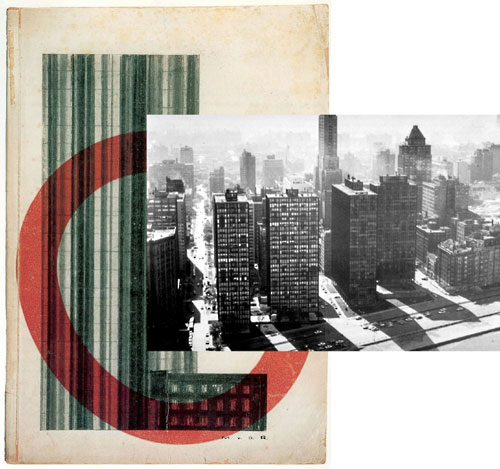The course will study the transformations of modernism and its discourses from interwar Europe to the postwar world. We will examine different media (art, architecture, film, culture criticism) through a variety of frameworks, including politics of culture, formal and compositional strategies in a range of media, and the effects of technological and industrial development on particular practices in the arts. While the primary focus will remain on transitions between Weimar Germany and Cold War America, we will touch on (and students may work on) a broader array of environments, including Eastern Europe and global modernism.
From the mid 1920s, the counter-narratives provided by the emergence of totalitarian states across Europe played an important role in the development of modernist histories, particularly after the emigrations of key cultural figures from Germany and Eastern Europe. This development, combined with the ellipsis of the war years themselves, structured subsequent narratives of modern practice as heroic tales of timeless virtue arrayed against the forces of evil. As mature modern artists and architects found a home in the boom economy of postwar America, narratives of avant-garde struggle masked increasingly hegemonic practices that finally broke down at the end of the 60s, out of gas. In the 1940s and 50s, by contrast, modernism cleansed itself of the messy problem of popular mass culture as integral to avant-garde practice, appearing to leave figures like Siegfried Kracauer on the fringes of a critical movement of which Theodor Adorno and Clement Greenberg occupied the center.
The course will examine dynamic change within modernist practices (so pronounced from prewar Europe to postwar America) within an overarching framework that posited stable unchanging values despite the rapidly changing world. Readings in social theory, from Simmel to Adorno to McLuhan, will help frame questions and issues for the class. Course content will include an introductory pre-history of Amerikanismus and Fordism. Subsequent case studies will focus on the work of transplanted Frankfurt School critics, the transformation of collage and montage practices from the 1920s to British Pop Art; the development of steel frame construction in Weimar Germany and its adaptation to the American corporate skyscraper; 'New Vision' photography at the Bauhaus and in Berlin, and its echo in product and stock photography in postwar America; the separate iterations of the Bauhaus in Dessau and Chicago (and Ulm); interwar painterly abstraction and its American heirs. Particular emphasis will be placed on the infrastructures of consumer culture that altered the audience for modern art and architecture, including advertising and behavioral psychology as applied in the arts. Students will also be encouraged to look at particular cases involving transformations to modernist practices as they moved further afield, to Japan, to China, to Australia and New Zealand, to Latin America, and to Africa in the same period.

